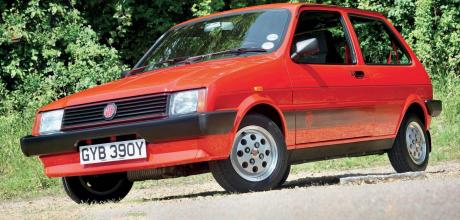1982 MG Metro
After the demise of Abingdon and the MG sports cars, the Metro arrived amidst some controversy. It wasn’t a big hit with the purists but, today, Austin- Rover’s first hot hatch has quite a following…
WORDS AND PHOTOS: CRAIG CHEETHAM
MG METRO AT 40
Hatching a plan
The 24th of October 1980 was a dark day for MG fans, as the Abingdon factory that had served as the brand’s home since 1929 shuttered its doors for the last time, closed as part of the Michael Edwardes plan to restructure the vast Leyland Cars operation.
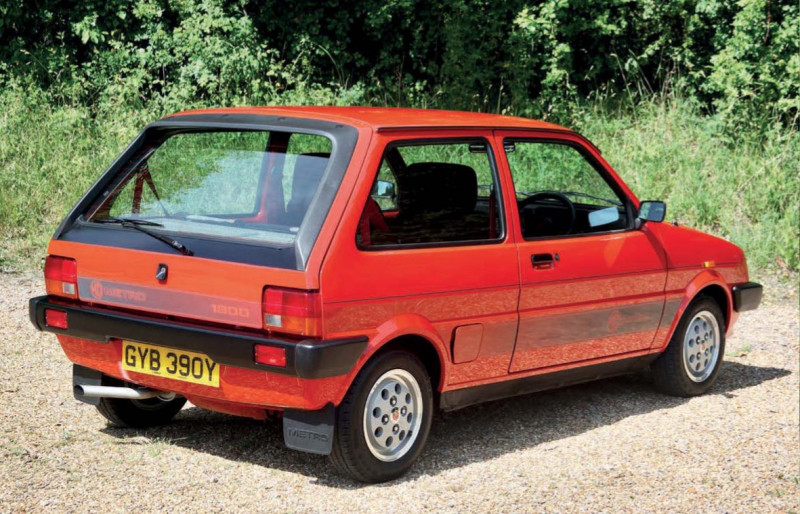
IT’S THE EARLIEST MG METROS THAT ARE THE MOST DESIRABLE AND THE EXAMPLE IN OUR PHOTOS HAS TO BE ONE OF THE BEST.
Its closure coincided with the company’s big hope for the future – the new Metro supermini. Billed as ‘A British car to beat the world’, the little Metro was seen as key to revolutionising Leyland’s (later Austin- Rover’s) fortunes.
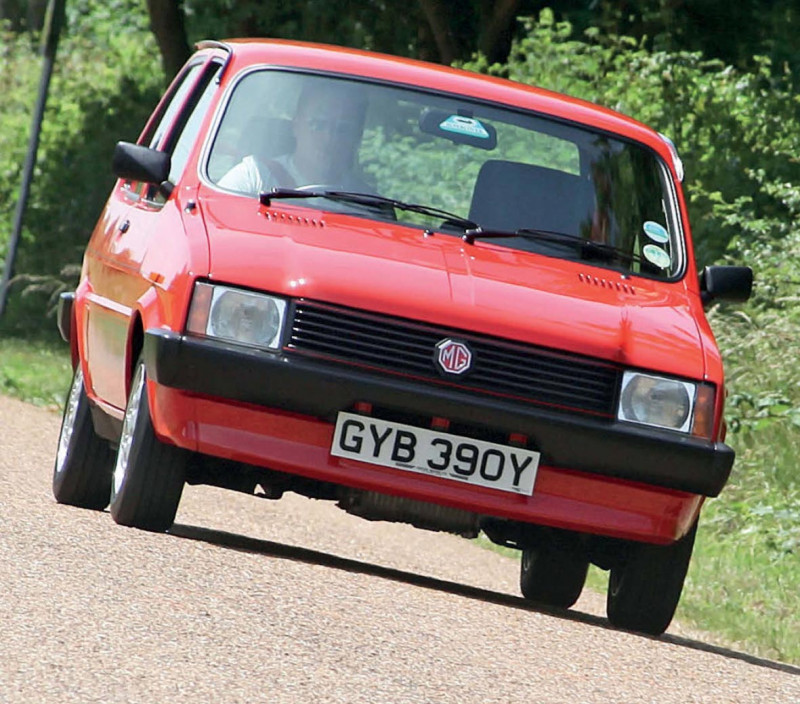
While there were plans to create a performance version of the Metro from early on in the car’s life, it would be the summer of 1982 before that car appeared. It would bring with it the return of one of the most famous sporting names in the car industry, absent from showrooms for 18 months. Dyed-in-the-wool MG aficionados were somewhat offended by the way in which the famous octagon had returned; not on a sports car but on a mildly- souped-up version of the Metro. Yet the MG Metro was more than a badge-engineering exercise, unlike the MG variants of BMC saloons in the 1960s.
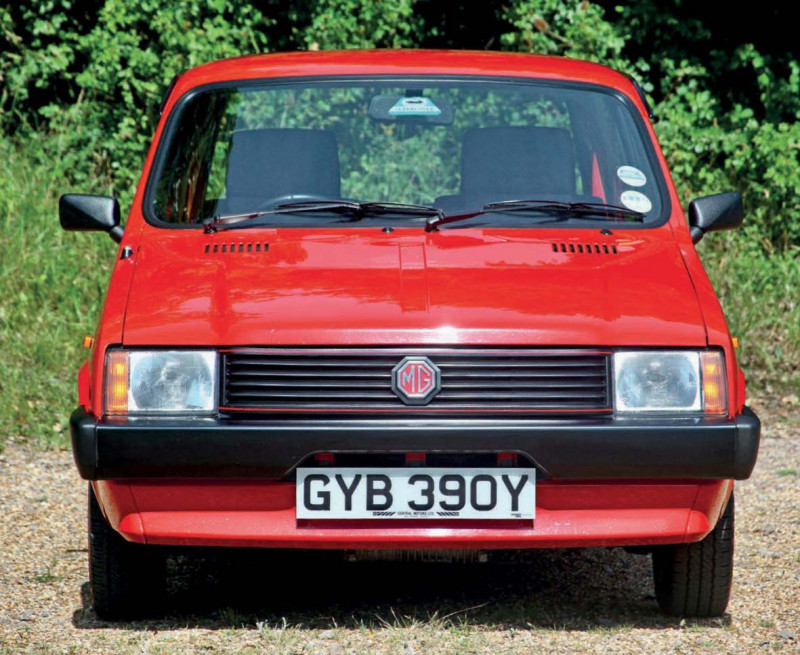
First of all, it looked different, with a rear spoiler-cum-window trim that enveloped the rear glass, along with ‘Pepperpot’ alloy wheels and side graphics. Inside, the sports seats were much improved. There were sports instruments, too, along with red carpets and seatbelts (this was the ear of the yuppie, after all) and a three-spoke steering wheel.

I'VE LOVED METROS FOR ALL OF MY LIFE SO TO HAVE AN MG IN IMMACUALTE CONDITION IS A REAL ACHIEVEMENT.
An increased compression ratio upped the power output of the revised A-Plus engine to 72bhp, while other positive features included four-piston brake callipers that were among the best on any small car. Shorter gearing meant it also felt much more eager than a standard Metro, albeit at the expense of being less refined at speed; a situation not helped by the lack of a five-speed gearbox.
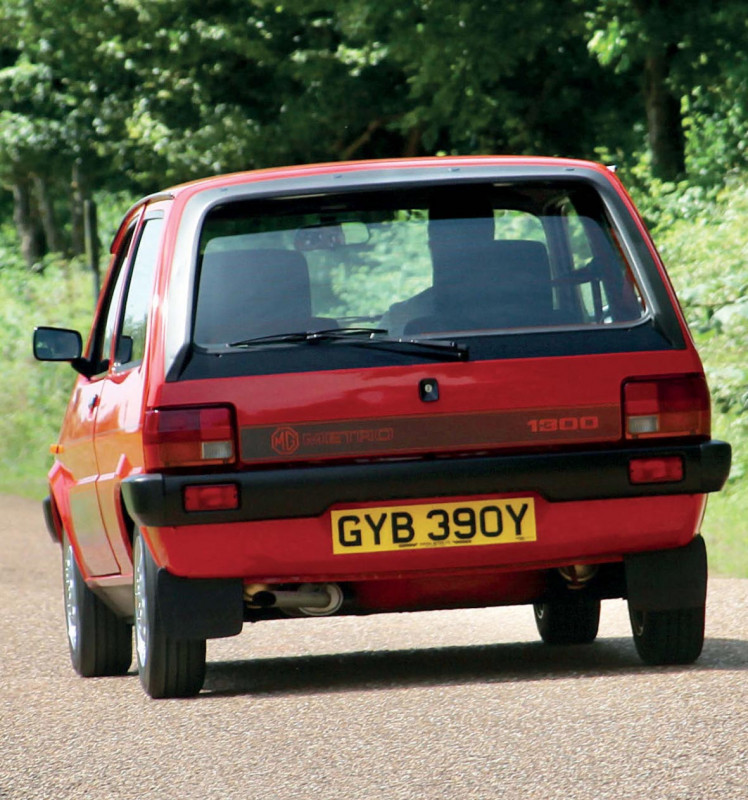
A year later, the MG would evolve int a more serious hot hatch, with help of some engineering expertise from Lotus Cars Race Engineering, the team behind the turbocharged Lotus F1 cars. Enter the MG Metro Turbo, launched in August 1983.
YET THE METRO WAS MORE THAN A BADGE ENGINEERING EXERCISE, UNLIKE THE MG VARIANTS OF BMC SALOONS IN THE 1960S.
By fitting a turbo to the Metro, not only would it make the car a livelier hot hatchback but it would also allow Austin-Rover (as it was now known) to homologate a turbocharged model for use in motorsport.

The engine was fitted with a Garrett T3 turbo on a specially designed and cast exhaust manifold. Compressed air was delivered to a single SU carburettor that was modified to run with pressurised air, thanks to variable rate fuel pressure delivery to ensure it didn’t flood. The unit was significantly strengthened with materials and processes common to competition engines and came with many Turbo-only parts, such as a ported cylinder head, pistons, crankshaft, block and sodium-filled exhaust valves. Aside from the hard-to-ignore turbo, though, it looked little different externally from a standard A-plus engine.

It was distinguishable from non-turbo models by its body kit, consisting of a front spoiler, wheel arch extensions and side skirts, along with flat-faced 13-inch alloy wheels with low-profile tyres.
Peak power was a rather modest-sounding 93bhp, though racing Metros could often muster double this. In road use, though, any more power would have been too much for the four-speed gearbox, especially as the transmission was lubricated by the engine oil.
As a result, one of the cleverest features of the Metro Turbo was an electronically-controlled leak-off system from the turbo’s wastegate. It would expel air from a valve in the turbo hose if the intake pressure was above 4psi when running below 4,000rpm but would allow it to increase to 7psi at faster engine speeds, where peak torque was already surpassed. This early iteration of what’s now largely regarded as boost control was quite innovative technology and exists in most turbocharged cars today.

It didn’t, however, address the problem it was intended to address and, although it prevented boost arriving at the same time as peak torque, the gearbox failures it was meant to alleviate still came thick and fast. That is, of course, if the Metro Turbo was moving at all. At launch, there was a problem with the enamel-coated alloys, which were too shiny and would cause the tyres to slip around the beads. This, in extreme cases, would allow the front wheels to turn but not the tyres under hard acceleration or the terrifying opposite under braking. In 1984, the MG models took on the changes from the rest of the Metro range, including the vastly improved one-piece dashboard and revised seats, while in 1986 the spoiler and bodykits became colour-keyed.
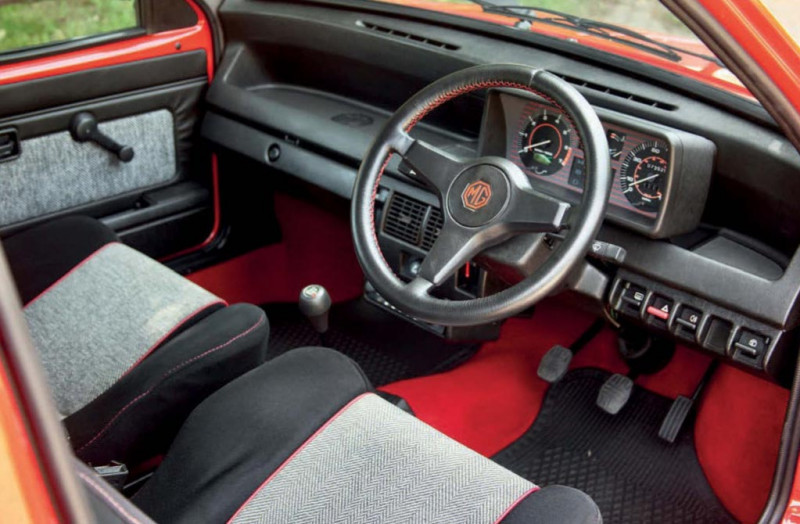
Metric wheels and tyres were fitted as per the standard Metro models, with a new design and the option of silver or white alloys depending on body colour, though a cost-cutting exercise in 1987 saw the alloy wheels being moved over to the options list as an up-sell opportunity for dealers. Instead, the MG got stylised wheel trims in silver with the MG logo picked out in red while, if you ordered a white MG Metro, you got white trims instead.
...A COST-CUTTING EXERCISE IN 1987 SAW THE ALLOY WHEELS BEING MOVED OVER TO THE OPTIONS LIST AS AN UP SELL OPPORTUNITY FOR DEALERS.
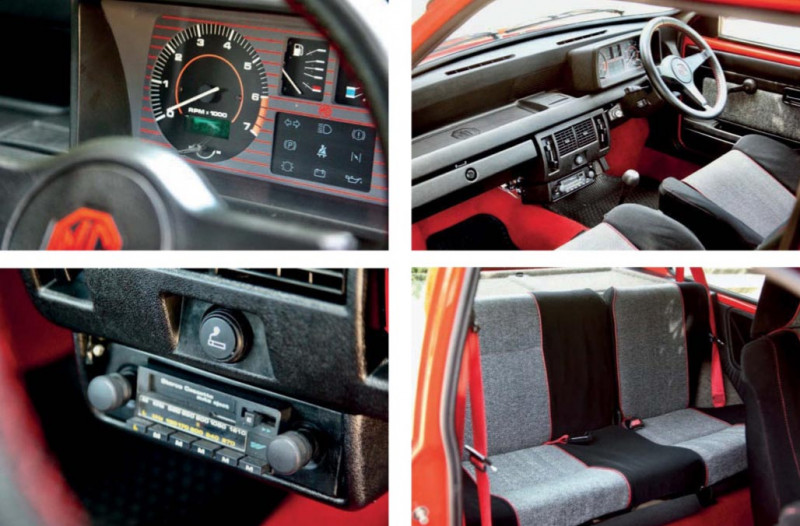
In 1988, to coincide with the newly-formed Rover Group, the MG got a final restyle: new and improved seats and distinctive side graphics, with large ‘floating’ MG badges down the sides, and new, rather lovely, multi-spoke alloy wheels.
THE PEUGEOT 205 GTI AND RENAULT 5 GT TURBO, TO NAME BUT TWO, DID THINGS SO MUCH BETTER

While the last-of-the-line MG Metros looked great, they felt crudely engineered compared to their rivals of the day. The Peugeot 205 GTi and Renault 5 GT Turbo, to name but two, did things so much better.
With the demise of the A-series models in 1990 came the demise of the MG Metro, after 120,197 standard models and 21,968 Turbos had been built. The following year the MG badge would once again take a sabbatical until it returned in 1992 with the RV8. This time, the traditionalists got what they wanted: a rear-drive sports car and not a red seatbelt in sight.
From a classic perspective, though, it’s the earliest MG Metros that are the most desirable and the example in our photos has to be one of the best. First registered on January 1, 1983, GYB 390Y was supplied new by Central Motors of Chard in Somerset.
It has had four owners since, the most recent being Matt Lynch from Bedford. The 28-year-old railway signaller is a lifelong fan of MG and Rover cars and also owns a ZT 260, along with an early Mk 1 Metro and a Rover 420.
Prior to Matt, the car was owned by BL aficionado and former Austin-Rover salesperson, the Reverend Colin Corke, who had returned it to the road after a long lay-up. “As soon as I saw it, when Colin had the car, I knew I wanted it,” said Matt. “I just kept badgering him, telling him to keep me in mind if ever he was selling it.”
Colin made the decision to part with the Metro in 2021, primarily on the basis that he knew Matt would be the perfect owner. A passionate detailer with fastidious attention to detail, Matt has since transformed GYB 390Y into arguably the best MG Metro in the country. It’s an absolute delight, correct down to the very last detail.
It’s also unlikely to be going anywhere soon, other than to various events. Indeed, it had pride of place in the MG Car Club tent at the recent MG Live! event at Silverstone. “This is the car I’ve always wanted,” said Matt. “I’ve loved Metros for all of my life and to have an MG in such wonderful condition is a real achievement. I adore it and I’ll look after it and enjoy it for as long as I can.
Black and red detailing everywhere (including the seatbelts) — the MG Metro's cabin was the absolute defintion of the yuppie era!
MG Metro's A-Plus engine was much improved over the original A-Series, with 72bhp in non-turbocharged form


